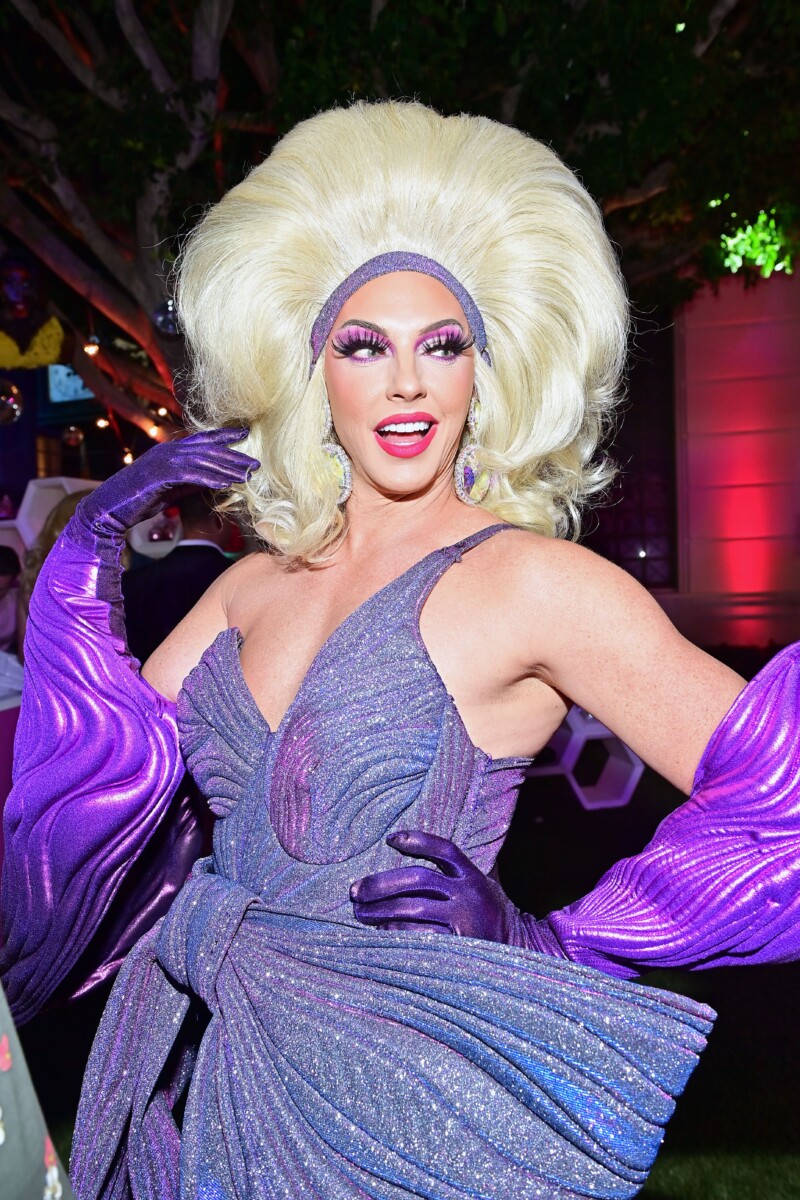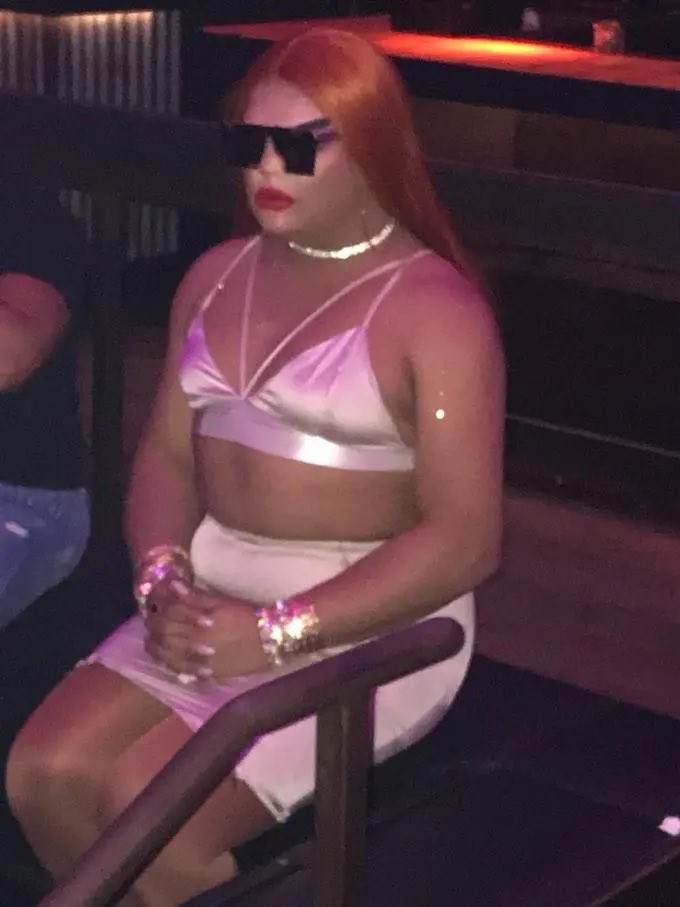Definition
A drag queen is a person, who wears makeup and clothes, and they exaggerate the feminine ways for their performance, to engage and entertain their audience. Most of drag queens are men, gay men, or queer men; however, recently, there is an increasing number of drag queens who are transgenders and cisgender women. Still, any gender is welcome to become a drag queen. Their face is covered with layers of makeup: shaping eyebrows, concealing beard shadow, sharp contour, and highlighting to shape the eyes, lips, face, and even body. Drag queen’s performances vary from dance, comedy acts, lip-syncing to songs, to political and social commentary. They usually perform at nightclubs, parades, carnivals, shows, and even sometimes in drag story hour, in which drag become storytellers to read books to children in libraries schools, and bookstores. Drag queens eventually become an integral part of the LGBTQ+ community, by promoting acceptance and diversity to gain support for their community. In addition, drag is a personal form of self-expressing, and make themselves confident of their identity. Furthermore, drag queens usually come with personas of fictional characters, celebrities, and original creations. Apart from entertainment, drag performers often use their art and visuality to challenge gender stereotypes, blur the lines between genders, and address social issues. [3]. Also, a show named Drag Race hosted by RuPaul (a drag queen) has raised the popularity of drag queens regionally and even internationally, and many people enjoy the shows. Interestingly, the theatrical slang for DRAG stands for “dressed as a girl” [3].

History
It is said that there is no exact origin of the word drag queen, and the start of drag queens varies in different countries around the world. Drag started out in the late 16th century and early 17th century, during the Shakespearean theater era, when only men could perform on stage. Since there were female roles in the performances, there were men in the cast who had to dress up as the opposite sex character so that the performance would not be affected. The dresses, or petticoats men wore for their female role would drag along the floor. [1]. The 1920s period was when the segregation of bars cleared the way for drag balls, where many Black queers would gather. by 1932, there was a division between queer white men: either you were a masculine guy who blended in or a fairy-feminine who dressed in drags [2]. Around the 1950s, drag queens began to perform in gay bars and spaces. As more gay bars pop up, drags strengthen themselves as an art form. During the 1980s, drags tried to look as much like women as possible, and they encouraged women to wear high evening fashion to attend balls; eventually, the 1990 documentary Paris Is Burning had eye-opened many people to drag. Later in 2009, the show Drag Race by RuPaul where drag queens compete with one another, brought drag to the mainstream [2]. Today, drag queens eventually become a form of art and many people respect them.
Examples
Drag queen has been put into practice in real-life situations. Drag Race by Ru Paul is a prominent example when it comes to entertainment. Drag Race by Ru Paul is an American television series where many drag queens from different places compete to become “America’s next drag superstar” [4]. Moreover, the population of Drag Race has broadened globally, and in some countries, even franchised shows make their own versions. The winners of Drag Race such as Trixie Mattel, Sasha Velour, and Peppermints have expanded the acceptance, and visibility of drag queens, and respect from the public in the entertainment industry. Furthermore, drag queens also influence the makeup industry, by being the trend starters to use colorful makeup, along with techniques such as contouring cheeks, highlighters, false lashes, and ombre eyeshadows that have been used by many girls, women, and even celebrities, not just in the drag community. Popular makeup artists such as Jeffrey Star have inspired many young men to be confident in using makeup, which is another way of promoting authentic self-expression. This encourages people to explore the other corners of their inner selves. Besides entertainment, drag queens even contributed to educating children. Drag Queen Story Hour (DQSH) is an organization that promotes reading through drags to children. The drags have been reading in schools, libraries, and bookstores. [5]. According to ABC7, drag queens have recently hosted “Best in Drag Show”, a show on beauty pageants where amateur performers become beauty contestants and compete with one another. The purpose of the show is to advocate for the Alliance for Housing and Healing, an organization that helps children and families who are suffering homelessness and hunger in Los Angeles County [6].
Through these examples, it is significant to learn about the term drag queens because, through drag queen shows, the learners can become more open and supportive of their friends and families. The drag queens’ performances help the audience to develop a deeper appreciation for the arts and enjoy a distinct cultural experience. Furthermore, drag queens contribute themselves to the community by putting effort into promoting inclusivity and diversity, which enables the audience to be aware of the significance of embracing people from different experiences and backgrounds.
Drag Queens Today
The concept of “drag queen” differs from one country to another. In Thailand, the focus of drag queens is on pageantry. They are very open on sexuality, gender, and gender expression. According to drag performers in Thailand, they said that Miss Tiffany’s Universe (a long-running Thai beauty contest), is popular here, and it is where trans girls become and perform drag. Meanwhile, Russia’s drag queens are known for their wild and unique style. Drag queens are not a viable career in Russia, since they have their own law prohibiting “gay propaganda”, which makes the drag queens here are having a hard time. During the 90s, it was difficult to have access to cosmetics and fabrics; therefore, the Russian drags tried their best to make themselves look as like drag artists as possible from nothing. This makes the drag queens in Russia become a blend of wild and bland, but still very distinct from other drag queens around the world. In Nigeria, drag queens are also illegal, and it is categorized under anti-gay legislation. However, they still choose to become drag queens. They formed small communities and became friends together, but still, it was very challenging. The show Drag Race has brought drag queens into the mainstream, and many audiences have begun to understand drag and appreciate it as an art form. [7]
Yet, drag queens today are still a topic of controversy. Specifically in the United States, Tennessee has initiated to ban on drag queens. The activists and politicians believe that drag queens are threatening children. They believe that banning drag queens would protect children from sexual abuse. This begins with a scheduled pride performance and the drag queen’s opponents have together fundraised thousands of dollars in order to file an injunction to prevent the performance from taking place. In contrast to their beliefs, studies have shown that the drags do not threaten children, and banning drag queens would not help them. [8]
On top of that, RuPaul’s Drag Race has raised the popularity of drag queens globally. With the development of mainstreaming and merchandising, drag queens have become more welcomed to society. Eventually, drag queens have become new moneymakers for performers, publishers, and even manufacturers. Moreover, the development of social media has spread drag queens to the world, making it accessible to many audiences [9]. In the future, drag queens will become more and more popular when it comes to performances, as many bars and clubs around the world have drag queens to be part of the nights.
Citations
[1] “The History of Drag and Historical Drag Queens.” BBC Bitesize, BBC, www.bbc.co.uk/bitesize/articles/zbkmkmn.
[2] Mattel, Trixie. “Trixie Mattel Breaks down the History of ‘Drag.’” Them, Them., 20 Sept. 2018, www.them.us/story/inqueery-drag.
[3] Robyn Hunt. “The Cultural Significance of Drag: A Look at How Drag Has Transformed and Influenced LGBTQIA+ Culture.” LinkedIn, www.linkedin.com/pulse/cultural-significance-drag-look-how-has-transformed-robyn-hunt-/.
[4] “RuPaul’s Drag Race.” Wikipedia, Wikimedia Foundation, 22 Oct. 2023, en.wikipedia.org/wiki/RuPaul%27s_Drag_Race.
[5] Mess, Lil Miss Hot. “I’m a Drag Queen Who Reads to Kids. Haters Call It ‘indoctrination’ – Here’s What They’re Really Learning.” HuffPost, HuffPost, 8 July 2022, www.huffpost.com/entry/drag-queen-story-hour-children_n_62c5ac28e4b06e3d9bafd5ef.
[6] Drag show returns to help fund housing for people living with HIV/AIDS (2023) ABC7 Los Angeles. Available at: https://abc7.com/best-in-drag-show-lgbt-queen-lgbtq/13783476/
[7] Person. “‘Wild, Loud, Glamorous’: Drag Cultures around the World.” BBC Three, BBC, 31 Jan. 2022, www.bbc.co.uk/bbcthree/article/4d31a84c-36e9-4c66-8519-cd470608e05e.
[8] How drag queens got dragged into politics (no date) CBS News. Available at: https://www.cbsnews.com/news/how-drag-queens-got-dragged-into-politics/
[9] Greenough, Chris, et al. “Drag Culture May Be Mainstream but Its Forms Are Constantly Evolving.” The Conversation, Oct. 2019, http://theconversation.com/drag-culture-may-be-mainstream-but-its-forms-are-constantly-evolving-125347.
